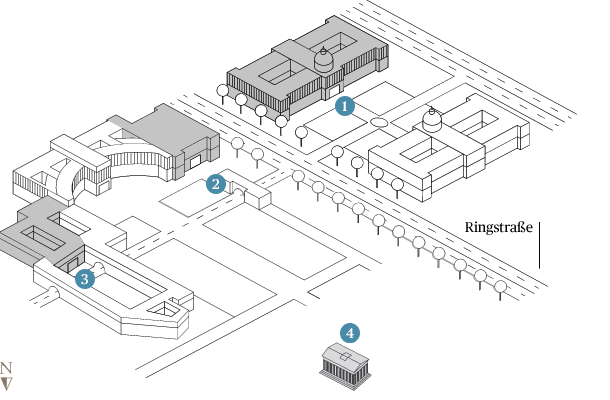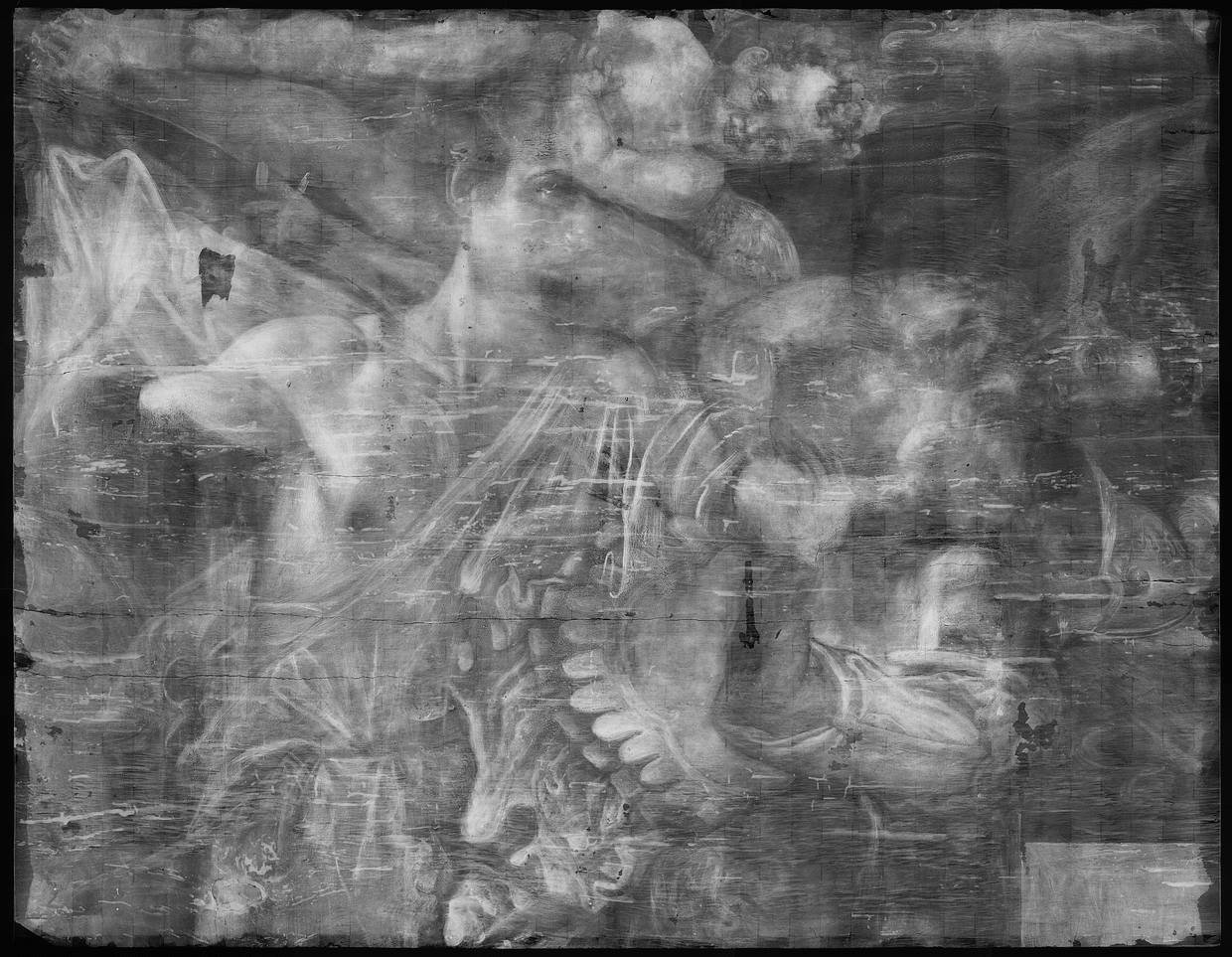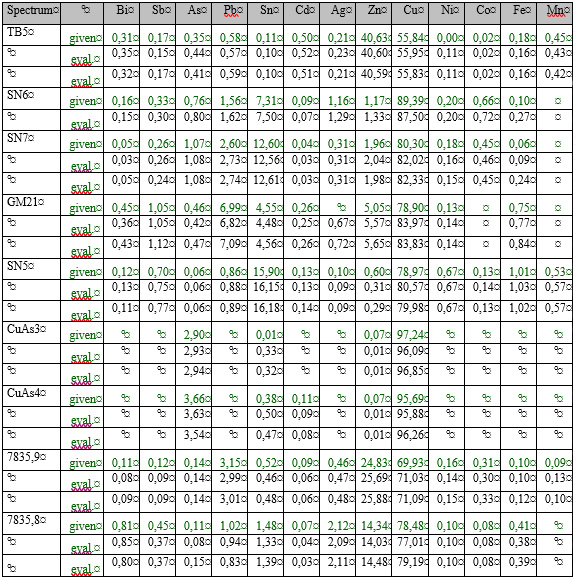Implementation of the CRONO MA-XRF Scanner at the Kunsthistorisches Museum
Since the beginning of 2019 the Kunsthistorisches Museum (KHM) operates a newly purchased CRONO MA-XRF Scanner analysing several important works of art, like paintings by Hillard, Jan Van Eyck, Holbein and Caravaggio (Fig. 1).
Caravaggio’s David with the head of Goliath, 1600/01, inv. no. GG_125, was investigated in connection to the exhibition “Caravaggio and Bernini”. From earlier X-ray radiography investigations it was known already that the poplar panel of this painting was reused - featuring a painting of Venus and Mars together with a cupid by a different artist beneath (Fig. 2).
The following parameters were chosen for the MA-XRF investigation:
Tube Configuration: 50 kV, 200 mA
Tube Target: Pd
Beam Diameter: 0.5 mm
Pixel Size: 0.5 x 0.5 mm
Speed: 13.89 mm/s
Spectra time: 30 ms
In order to be able to perform the measurements during working hours only – ensuring permanent monitoring of the scanning process – the measuring time was adapted to app. 8 hours/scan, leading to single scans of app. 60 x 35 cm each. In principle, the pixel resolution can further be enhanced performing spectral overlap. Nevertheless, this would result in a considerable increase of the time needed for one single scan. Therefore, mostly for bigger scans, a resolution of 0.5 x 0.5 mm, which proved to be sufficient in most cases, was chosen, with the option to additionally analyse parts of special interest with a higher resolution.
The CRONO software as well as the M4 Tornado software of Bruker can both be used for data evaluation, providing the possibility of deconvolution of the scans and the extraction of spectra of special parts thereof.
The elemental distribution maps received as results for the scans of David with the head of Goliath enabled new insights into the underlying composition. This was possible, because the palette of the two painters was very different, i.e. Caravaggio using mostly earth pigments and lead white. Furthermore, the two paintings were separated by very thin intermediate layers only, allowing the detection of X-ray fluorescence signals from both paintings (Fig. 3).
Besides scanning flat surfaces the CRONO XRF instrument can also be used for point analyses with additional quantitative evaluation of elemental compositions. Within the last months also first measurements were performed applying this option. At first, to enable correct data evaluation, the quantification procedure needed to be adapted for the use of a Pd tube and improved to provide satisfying results in cooperation with Roald Tagle from Bruker.
Quantification in this case was done by extracting the data from the CRONO software and copying them into the M4 Tornado software. The procedure applying the M4 Tornado software included the identification of the elements, their quantification and the creation of linear trend lines to use the slopes as correction factors. Today the resulting evaluation procedure includes the correct factors for a direct quantitative analysis applying comparable measuring conditions.
For the creation and test of the evaluation procedure a set of 9 standards of MBH Analytical LTD were used. The given values for the elemental composition of the standards as well as the results applying the developed quantitative evaluation are shown in Table 1. An example for a trend line (for the element Cu) is shown in Fig. 4.
Information
Projektleitung
Katharina Uhlir
Projektmitarbeit
Sammlungen des KHM, Edoardo Tartaglia (ERASMUS)
Finanzierung
Kunsthistorisches Museum
Projektlaufzeit
seit 2019
- Online Sammlung
- Veranstaltungen
- Forschungsprojekte
- Archäologische Projekte
- Historische Projekte
- Kunsthistorische Projekte
- Naturwissenschaftlich-technologische Projekte
- Implementation of the CRONO MA-XRF Scanner at the Kunsthistorisches Museum
- The Renaissance Bronzes Revisited (REBRE Project)
- Technologische Studie: Falsche Tatsachen – Das Privilegium Maius und seine Geschichte
- Technological study of ancient byzantine 12 Nummi coins
- CLAVICHORDBAU – Ein Beitrag zur Konstruktionsgeschichte des ältesten Saitenklaviers
- Revealing Rubens’ creative processes by MA-XRF scanning: Het Pelsken (at KHM), Medusa (at KHM), Medusa (in Brno)
- Studium asiatischer und europäischer Lacke
- Norbert Grund (1717 - 1767)
- Untersuchungen an antiken Mumienporträts
- Naturwissenschaftliche Analysen an Sasanidischen Münzen aus der Regierungszeit Khusro II
- Röntgenfluoreszenzanalyse an 28 Münzen der Parther (8 – 109 n. Chr.)
- A 21st century approach to the study of historic violin bodies
- Numismatische Projekte
- Restauratorisch-konservatorische Projekte
- Abgeschlossene Projekte
- Publikationen
- Provenienzforschung
- Wissenschaftliche Abteilungen
- Wissenschaftliche Mitarbeiter*innen
- Wissenschaftliche Tätigkeit








